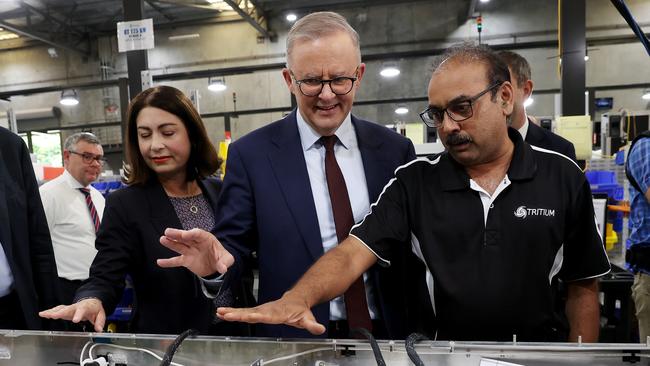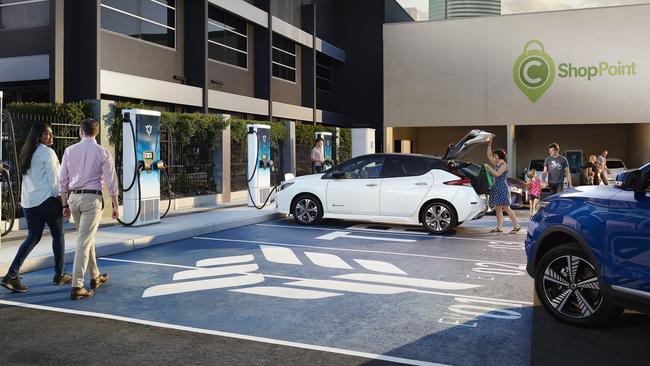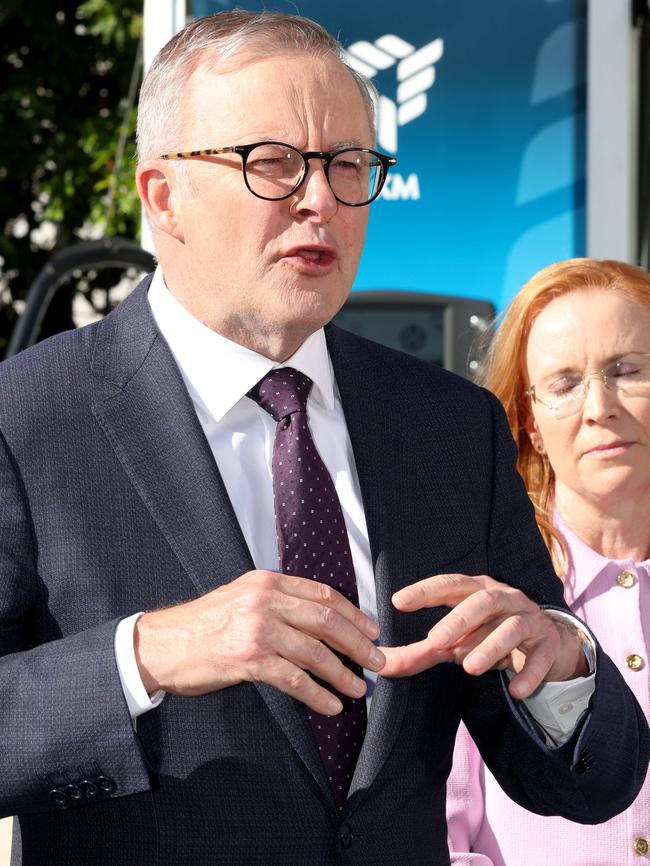Tritium owes $260m as sale sign goes up on troubled firm
The failed fast-charger firm, which was once the poster child of Anthony Albanese’s manufacturing revolution, owes creditors as much as $260m.

Failed fast-charging firm Tritium, which was once the poster child of Anthony Albanese’s manufacturing revolution, owes creditors as much as $260m with receivers seeking to sell the business or attract new investors.
A report lodged with ASIC reveals CBA Corporate Services is the biggest creditor of the Brisbane-based Tritium with claims of $199.6m followed by richlister Trevor St Baker’s Sunset Power, which is owed in excess of $66m. Mr St Baker is also a director of Tritium.
Tritium, which had ambitions to be the world’s biggest manufacturer of charging stations for electric vehicles, was worth an estimated $2bn when it listed on the Nasdaq in 2022. But those dreams turned pear-shaped last year when it announced that it was closing its Brisbane factory and shifting production to the US amid mounting losses and increased competition.
In a report to creditors, KPMG turnaround and restructuring partner Peter Gothard said he was looking for purchasers of the business or for investors to participate in a recapitalisation.
He said the outcome for unsecured creditors, including suppliers and contractors, would be dependent on the proceeds of any assets sales and security held by lenders and financiers.
“If there is a surplus of funds, there will be a potential return to unsecured creditors,” Mr Gothard told creditors.

“The administrators will be conducting their own investigation into Tritium’s affairs and there are a number of options regarding potential recoveries for creditors. At this stage, the investigations are in their early stages and it is too early to give any indication of recoveries.”
According to filings to ASIC, Tritium’s board was toying with appointing insolvency specialists last year, five months before KPMG and McGrathNicol moved in as administrators and receivers, respectively.
KPMG said it had been involved in 21 teleconferences between November and April with Tritium directors, certain members of its senior management team and professional advisors to explain the various options available to the group and “the nature and consequences of an insolvency appointment”.
The teleconferences also allowed KPMG to obtain enough information about the financial position of the group and the estimated level of funding that would be required in “any future insolvency scenario”.
McGrathNicol said the business has been stabilised and “is continuing operations on a business-as-usual basis” as it seeks new buyers or investors.
McGrathNicol partner and receiver Kathy Sozou said the sale process had attracted a number of interested parties.
“The interest we have received is encouraging but not altogether surprising,” Ms Sozou said.
“Tritium DCFC has established a prominent position in the out-of-home, EV fast-charging sector in the United States, Europe and in Asia.
“We are very confident the sale process will identify a new owner.”

Prime Minister Anthony Albanese had made repeated visits to Tritium’s Brisbane factory over recent years spruiking the job creation potential of the firm.
“These jobs are secure jobs. They’ll grow,” Mr Albanese, as opposition leader, told journalists when he visited the Tritium factory in Murarrie in 2022.
“They’re looking at expansion here in Australia. This is an example of the opportunity that is there from embracing the future.”
Tritium chief executive Jane Hunter in 2022 had boasted Tritium was set to expand its global manufacturing capacity and was poised to overtake engineering giant ABB as the world’s biggest EV charger maker.
A Tennessee factory in the US was expected to house up to six production lines for Tritium’s fast chargers.
Tritium’s creditors are set to meet on May 27 to decide the fate of the firm.







To join the conversation, please log in. Don't have an account? Register
Join the conversation, you are commenting as Logout